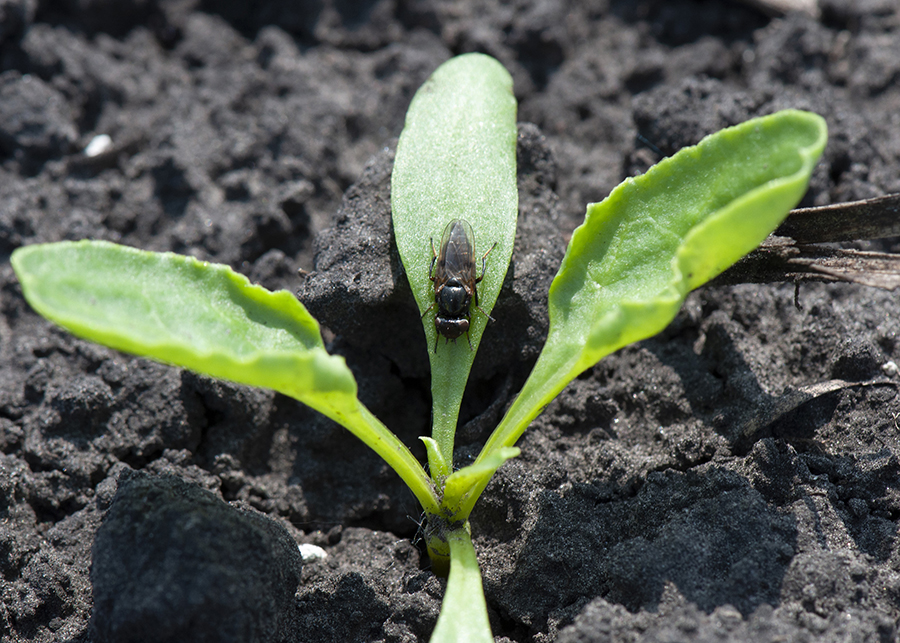NDSU Helping Control Sugarbeet Root Maggot

The sugarbeet root maggot (SBRM) is the most economically significant insect pest in the Red River Valley growing area.
The SBRM only causes damage at the larva stage. As the name implies, larvae injure sugarbeet roots by scraping the root surfaces with paired oral hooks.
“While varying levels of yield loss are possible, this injury can kill young sugarbeets when plants are affected by another stressor such as drought or root disease,” says Mark Boetel, NDSU entomologist and professor in the School of Natural Resource Sciences, who is working to control the problem.
The SBRM is capable of causing up to 45% yield losses that can equate to revenue losses of up to $500 per acre if not adequately controlled. Annually, more than 85,000 acres in the Red River Valley are at risk of economically damaging SBRM infestations. However, in 2020, about 140,000 acres were affected by moderate to high SBRM infestations.
Boetel expects infestations this year will be similar to the very high levels that have plagued producers in the past few years. He also is concerned about the spread of infestations into areas that had problems only rarely in the past.
Producers use modeling, monitoring and measuring tactics to determine the likelihood of SBRM and make decisions about using control tools such as insecticides to protect the crop. To help with that, Boetel developed a growing degree-day model for forecasting peak activity of the adult (fly) stage of the insect. The Root Maggot Model is available as an application on NDSU’s North Dakota Agricultural Weather Network website and as a free mobile device app.
In response to rising SBRM populations in recent years, American Crystal Sugar Co. and MinnDak Farmers Cooperative staff have assisted NDSU with its SBRM population monitoring program. As a result, it has expanded from a few dozen to about 150 grower-managed fi elds each year.
Insecticides are the way producers control the insect. Most apply the insecticide at planting time. Those in high- to severe-risk areas also commonly make at least one postemergence insecticide application to protect the crop.
FOR MORE INFORMATION:
Mark Boetel, 701-231-7901, mark.boetel@ndsu.edu
https://ndawn.ndsu.nodak.edu/help-sugarbeet-root-maggot.html


